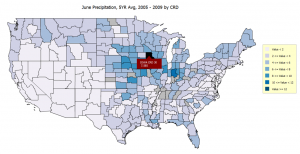As we kick off our CropSignal blog, we thought it would be a good idea to dive into the term agricultural intelligence. While we constantly use the term internally, we realize that the different markets use similar terms such as agribusiness intelligence, crop intelligence or other terms to describe what we consider agricultural intelligence. So a quick definition of what we consider agricultural intelligence is in order before we jump into further discussions.
At GDA we use the term agricultural intelligence to broadly refer to any data or information that has an impact on the agriculture industry. Agricultural intelligence includes typical crop related data such as statistics for yield, acreage, production, crop progress, crop condition and crop health. Agricultural intelligence also includes ancillary data such as weather, including precipitation, temperature and growing degree days and financial or market information such as supply and demand, crop prices, futures prices, imports, exports etc. Additionally, agricultural intelligence should include changes in government policies and laws, key business changes by market leaders and more. As you can see we believe in a very broad definition for agricultural intelligence. While we will intend to provide a heavier focus on crop related information, where our technology provides unique insight, we intend on touching on all these areas in the CropSignal blog and keeping our readers informed on the industry as a whole.
We encourage you to bring new ideas, request specific topics, bring your expertise through the comments section and follow us on Twitter, LinkedIn, Facebook or through the available RSS feed.


 Follow
Follow